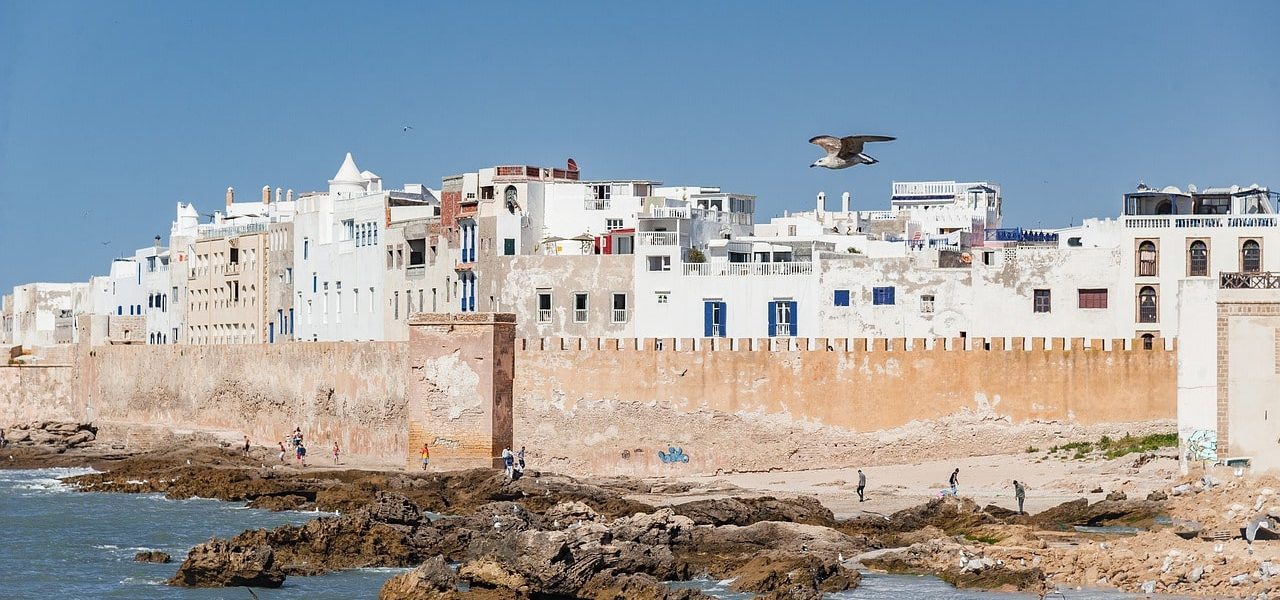

This is the most enchanting town on the Atlantic, and perhaps on all the coasts of Morocco. The old town and port, encircled by 18th century battlements, overlook a scattering of barren, wave-worn islands. A great sandy bay sweeps out to the south, while wooded hills dominate the skyline to the east. The old parts of the town, the medina, the Kasbah and the Mellah, fully express the exoticism of Morocco. The dark alleys are broken with frequent arches, and the women of the town are mysteriously concealed under their enveloping haiks.
Essaouira has been known over the millennia as Amougdoul, Mogdoul, Mogdoura and Mogador. The offshore isles still collectively know Mogador, a name that probably derives from the Phoenician Migdol, a look-out tower. Phoenician sailors used these islands from at least the 7th century BC, while archaeological evidence suggests that the principal villa remained in occupation for a thousand years from 500 BC to 500 AD. Through there is no evidence it would seem likely that this was a base for the silent barter trade in gold described by Herodotus. The excavations also confirmed that a sizeable settlement specialized in extracting the famous Tyrian purple, crimson to us, from shellfish during king juba II’s reign. King juba’s son, Ptolemy, was wearing just such a purple when the circus crowds at Lyon cheered this young prince more heartily than their own monarch, the emperor Caligula. Caligula was infuriated that any prince should be more popular than himself and had his cousin Ptolemy (the grandson of Anthony and Cleopatra) murdered, driving Morocco into full rebellion against Rome.
Essaouira is a charming, laid-back artists’ colony with cobble stoned streets, whitewashed walls and massive stone ramparts along the Atlantic Ocean. A former Portuguese trading colony built in the 18th century, this port town once held large populations of British and Jews. Although no longer a trading center, it is still a fishermen’s town. Its pretty harbor is filled with tiny, colorful boats which go out early every morning for the day’s catch. Its resident guests, seduced by its charms, included such diverse figures as Orson Welles, who made it the setting for his 1952 Othello, and Jimmy Hendrix, who spent much time here in the 1960’s.
Essaouira’s romantic ambiance, plentiful shops and intriguing art galleries, wood workshops, fishermen and colorful boats- all enclosed by ancient red walls make this little town a particularly pleasant place to unwind and relax for a few days. It enjoys a growing reputation for its unique art – which is only now becoming available in limited venues in the U.S and Europe. Essaouira is even more famous for its burled Thuya wood – delicately formed and inlaid in tiny shops built into the thick walls of the Portuguese ramparts. The scent from the oils used to polish this richly-colored wood permeates the air. The town faces a group of rocky islands and is surrounded by an expanse of empty sandy beaches and dunes. Everything in the small center is within walking distance and the beaches are quite clean.